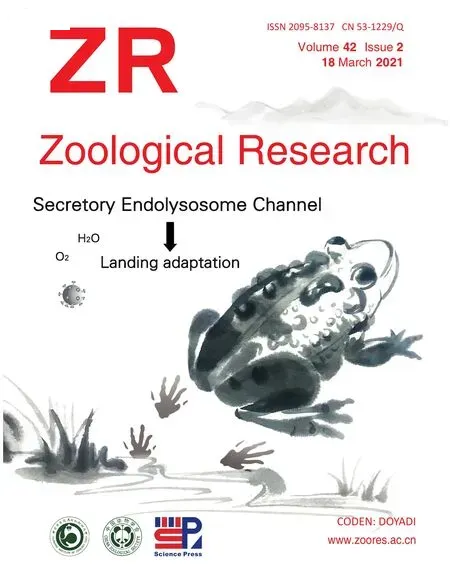Author Correction: Successful implementation of intestinal resection and anastomosis in non-human primates suggests the possibility of longitudinal intestinal research
Xue-Hui Wang, Tian-Zhang Song, Lei Li, Ren-Rong Tian, Yong-Tang Zheng,*
1 School of Life Sciences, University of Science and Technology of China, Hefei, Anhui, 230026, China
2 Key Laboratory of Animal Models and Human Disease Mechanisms of the Chinese Academy of Sciences, KIZ-CUHK Joint Laboratory of Bioresources and Molecular Research in Common Diseases, Center for Biosafety Mega-Science, Kunming Institute of Zoology, Chinese Academy of Sciences, Kunming, Yunnan 650223, China
3 Dongfang Animal Hospital, Kunming, Yunnan 650228, China
After the publication of Wang et al.(2020), we realized that there were some inappropriate statements in the content.Hereby, we correct them and apologize for any confusion this may have caused.
1.Original content:“we obtained 12 Chinese rhesus macaques (Supplementary Table S1) from the Kunming Primate Research Center, Chinese Academy of Sciences,China.”
Correction:“we obtained 12 Chinese rhesus macaques(Supplementary Table S1) from the Laboratory Animal Center,Kunming Institute of Zoology, Chinese Academy of Sciences,China.”
2.Original content:“The monkeys were housed in a facility with animal care and use programs accredited by the Association for Assessment and Accreditation of Laboratory Animal Care (AAALAC).All experimental procedures were performed according to the guidelines approved by the Ethics Committee of the Kunming Institute of Zoology (approval number: KPRC-PF20-03-V4.0)”
Correction:“All animal and experimental procedures were performed in the Laboratory Animal Center, Kunming Institute of Zoology, Chinese Academy of Sciences in accordance with the guidelines approved by the Ethics Committee of the Kunming Institute of Zoology (approval No.: SMKX-20181112-165) and the recommendations of “The Use of Non-human Primates in Research” (Weatherall, 2006).”
The original paper has been corrected in the online version of the article, which now differs from the print version as originally published.
- Zoological Research的其它文章
- A novel machine learning approach (svmSomatic) to distinguish somatic and germline mutations using next-generation sequencing data
- Yunnanilus chuanheensis, a new loach species(Cypriniformes: Nemacheilidae) from the upper Lixianjiang River in Yunnan, China
- A new species of the genus Micryletta (Anura,Microhylidae) from Hainan Island, China
- A new species of Kurixalus (Anura, Rhacophoridae)from Guizhou, China
- Flexible breeding performance under unstable climatic conditions in a tropical passerine in Southwest China
- Parasitism is always costly to the host

